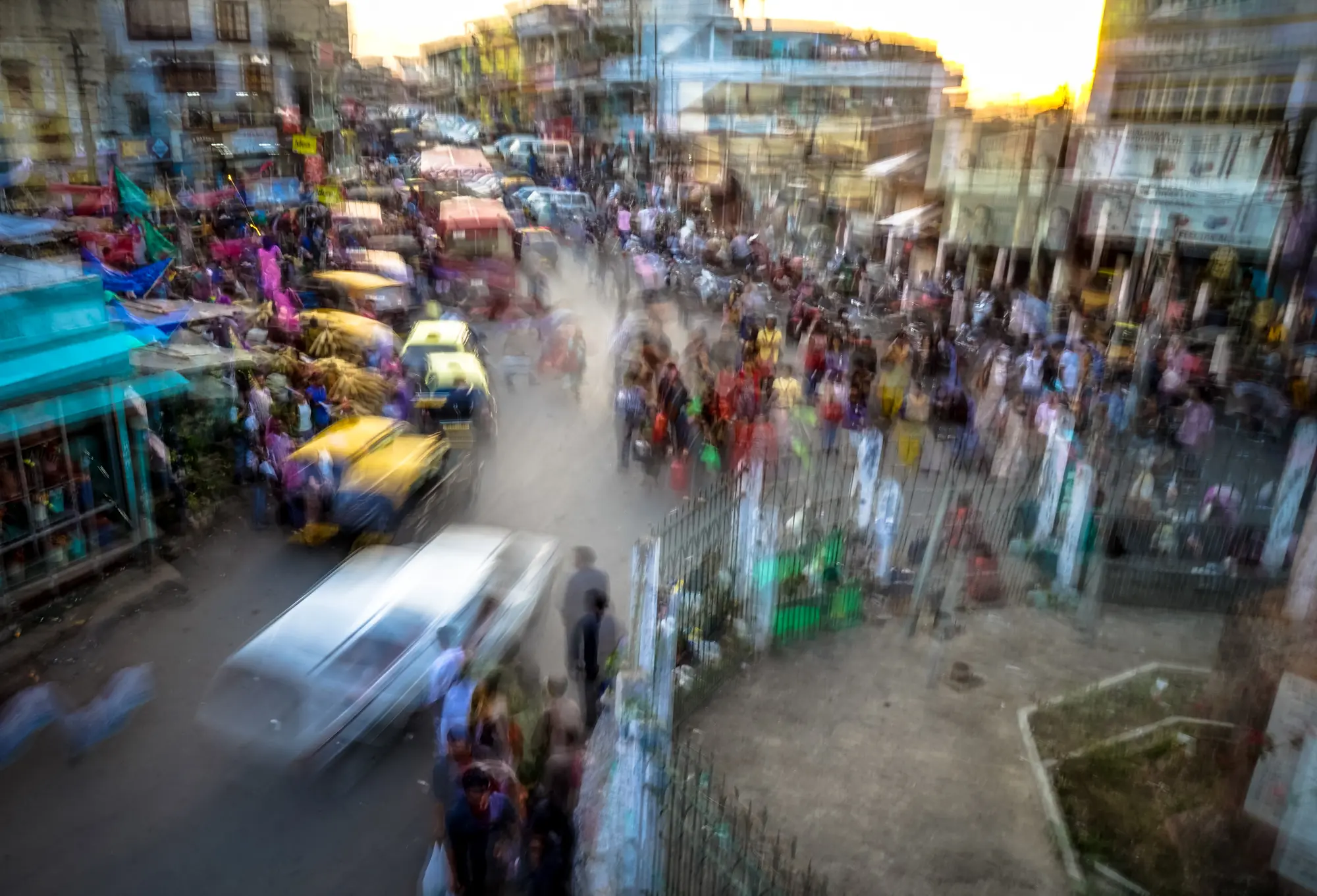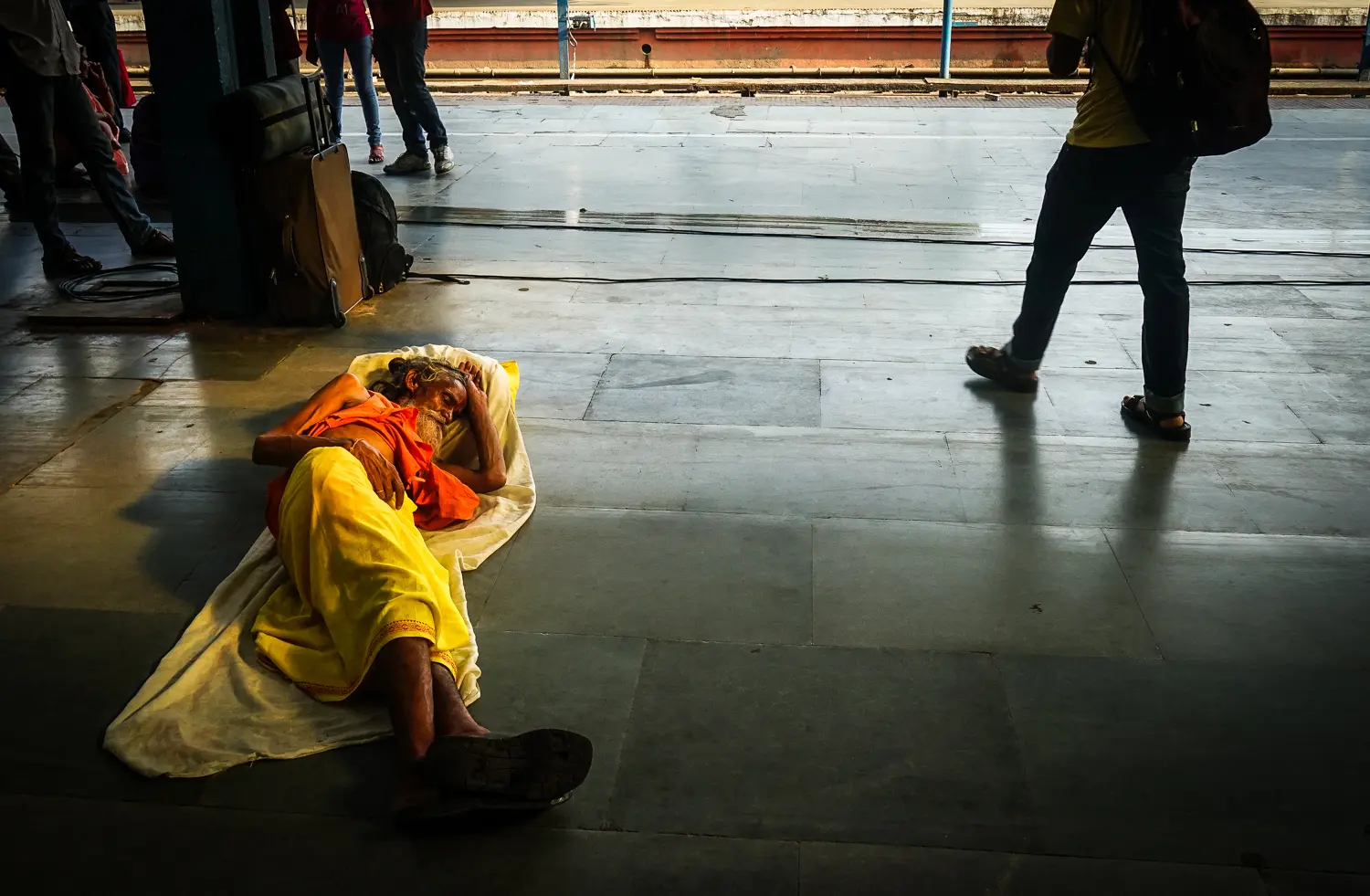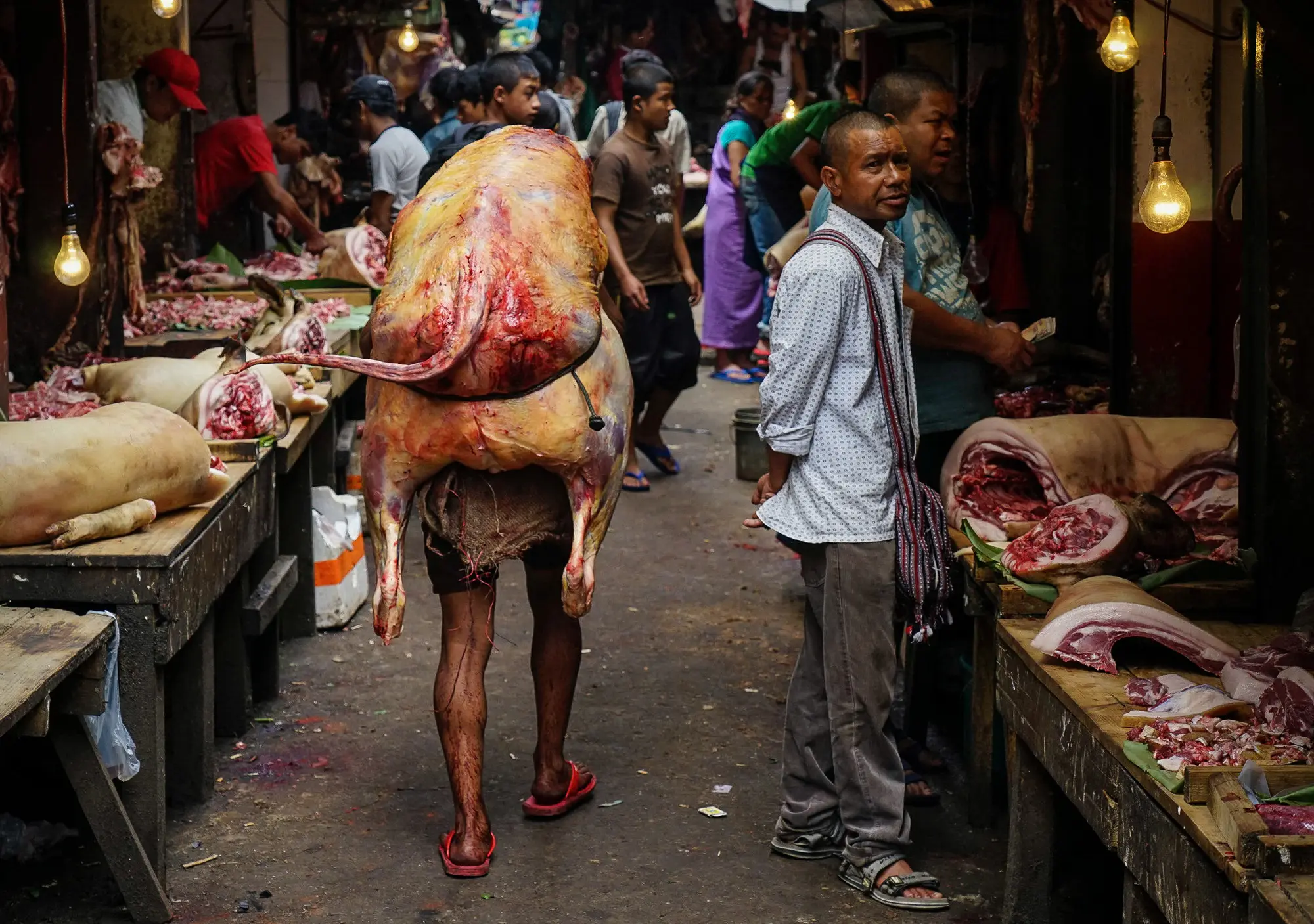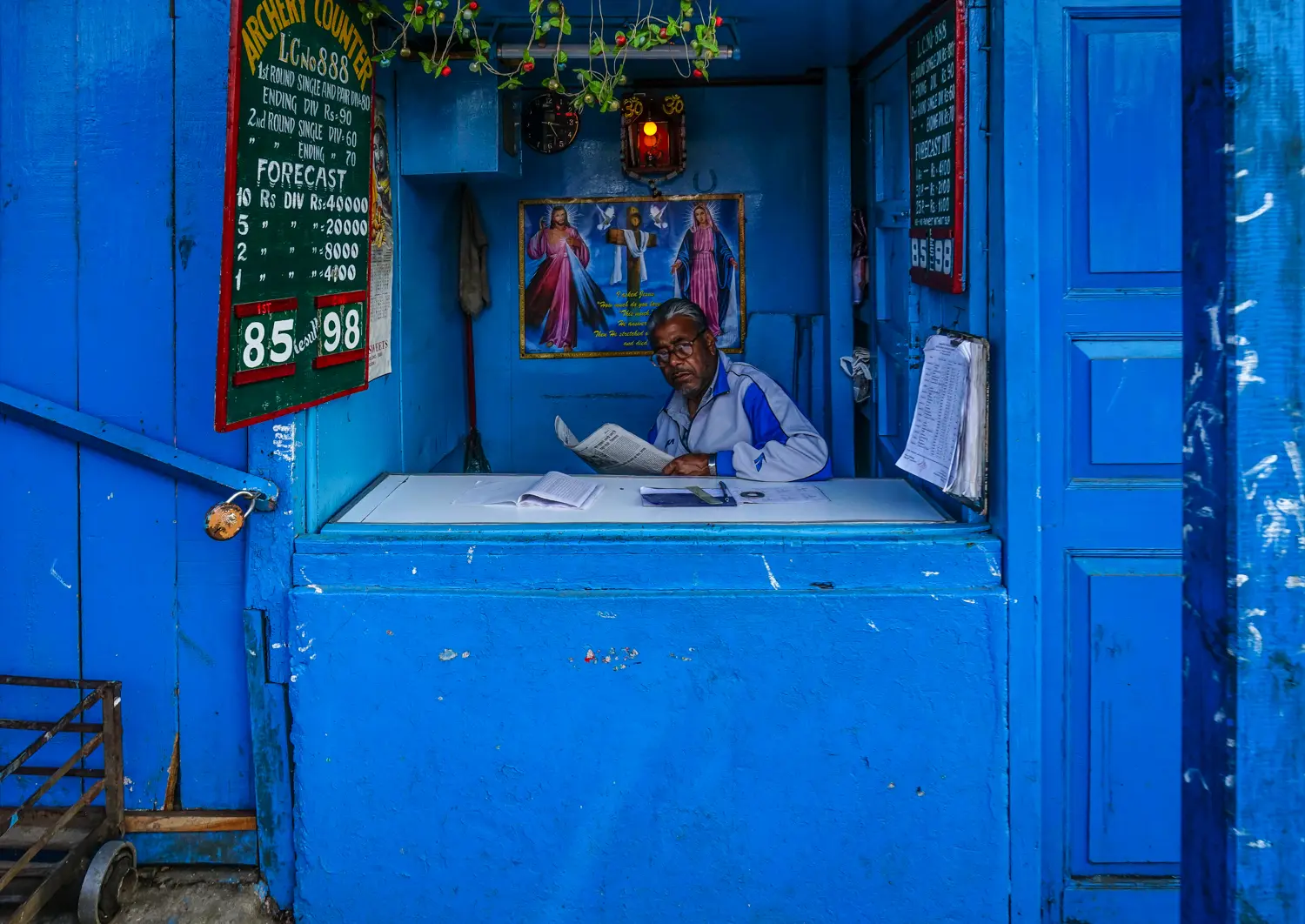There is no other country for a backpacker like India. With the population of a quarter of the world and a vast territory, it has literally a wealth of things to see and to do, and you would need a lifetime to do them all. Any backpacker and really, pretty much anybody else should visit India at least once in his or her life.
India is also one of the cheapest countries in the world for a traveler, but also one of the least safe in Asia from the healthcare standpoint. I am sure you have all heard the scary stories about people getting sick in India, and make no mistake: you most likely will too. But you can control the degree and frequency of getting sick there, by keeping your hands clean at all times and watching what you eat or drink. I will give you one simple rule: avoid any street food until you’ve built up some immunity, which can take a week or longer, and even when you do, stick to fried foods. For curries, stick to proper restaurants. In India, any place called “restaurant “ should be safe enough, as opposed to “hotels” – yes, there are “eating hotels” in India that won’t rent any rooms for you, but will serve you some cheap rice meals. And be especially careful with water. Even a drop of Indian tap water in a westerner’s mouth can send the poor sod to the bathroom for the next 24 hours. Remember that a lot of cheaper street juices are made with that very tap water, so do ask the right questions when buying anything.

If there is one region of India that is markedly different from the rest of the country, it is the Northeast. It consists of 7 small states that are all but separated from the most of the country by narrow Siliguri pass. They are: Tripura, Mizoram, Manipur, Nagaland, Assam, Meghalaya and Arunachal Pradesh. For logistics’ sake, I will also include Darjeeling, which is a part of West Bengal although completely different from the rest of the state, and the tiny Sikkim that used to be its own Himalayam kingdom until 1975.
Why Northeast?
India, with all its vastness and diversity, can be at times a challenging place to visit. Even English is not as widely spoken as you would think. The poverty is ubiquitos and can be depressing for some to observe on a daily basis. And let’s not forget that despite all these challenges, India is an extremely popular backpacker destination. If you want to see something different and, indeed, avoid bumping into other travellers for a while, the Northeast is for you.
Until recently, most Indians would advice you against visiting the region due to some political insurgency and separatism. But it has been safe to visit most of the area for quite some time now. And it is true that when you visit, for example, Nagaland, you could easily mistake it for the neigbouring Myanmar: majority of people look Burmese or even Chinese rather than Indo-Aryan. The region is such a hot pot of diversity, it is really fascinating how races mix and vary here. The tiny Tripura is predominantly Bengali and only marginally tribal. Manipur and Meghalaya are where races religions mix fairly evenly. Mizoram and Nagaland are almost completely East-Asian in ethnicity and Protestant Christian in religion. And Assam, being the biggest state of the region, enjoys most variety: from almost exclusively Indo-Aryan in the West to tribal in the East. Arunachal and Sikkim are practically Tibet-like places, especially Arunachal Pradesh with dozens of Himalayan Sino-Tibetan speaking tribes. If all of this fascinats you, you will love the Northeast.
The place is so rarely visited by foreigners (except Darjeeling) that you may spend days or even weeks without seeing another traveler. Despite that, English is spoken more here than in the rest of India. Most of these states rank high on literacy and education in entire India. Also, the extreme linguistic diversity of the tribes makes it almost mandatory to speak several languages by just about everyone in order to be understood outside their village.
And let’s not forget the scenery and sites of the region. While it lacks well-known monuments (well, except the Himalayan states), there is a fair share of interesting man-made sites and a plethora of natural ones, especially as you move higher towards the Himalaya. For a true traveller able to tackle the almost complete lack of tourist infrastructure, this can offer a lots of challenging things to see and to do.
Logistics
Most of the region is reachable by plane from Kolkata, which is sort of a regional hub. You can fly to any of the states’ capital city and plan you route accordingly.
If you prefer to travel by land (train), you have 2 options. First one is if you want to stay entirely in India. Then starting, again, from Kolkata, you would travel to Darjeeling and Sikkim first, then take a train from Siliguri to Guwahati with a side trip to Meghalaya, and then continue to Jorhat for Eastern Assam and Dimapur for Nagaland. Although train connections bound south do exist from the main Guwahati-Jorhat railroad, they are slow and time-consuming, so you can decide for yourself whether you want to visit Manipur, Mizoram and Tripura. Keep in mind that road accessibility can change at any time due to both weather and military situation, especially in Manipur and Arunachal Pradesh. Wherever your end-point is, you can either backtrack or fly back to Kolkata.

The second option is to traverse Bangladesh on your itinerary. I won’t spent time talking about Bangladesh here in detail, but that route would be my preferred one. Not only you would see another country (and a very different one) on your journey, you can do the loop by travelling from Kolkata to Dhaka, spending time in Bangladesh, crossing again to India at Agartala, the capital of Tripura, exploring the southern part of the Northeast, and them move slowly north to Nagaland, Assam and return back to Siliguri by train, allowing time to visit Darjeeling and Sikkim, before returning either to Kolkata or elsewhere in India. This way you would leave the natural best for last, although the tourist crowds of Darjeeling might induce a culture shock after spending weeks in the the relative traveler desolation.
While majority of the area can now be visited restriction-free, the notable exception is Arunachal Pradesh. As this state is a disputed territory with China, a permit is still required for Indian and foreign tourists alike, and it is only obtainable in New Delhi or Kolkata. For visits to Sikkim, a permit is also required for some reason, although it is easily obtainable in Darjeeling.
Darjeeling
When most people hear the word “Darjeeling”, they think either tea or railroad (as in Darjeeling Limited), or both. It is a lovely spot to chill for a few days, and chill you will, as this is a hill station with temperatures much, much cooler than in the lowland India, especially in summer time. Dress accordingly.
What is there to do here? Well, you can sample both the tea (in multiple tea shops) and the railroad. One thing you have to remember is that this is not an ordinary, but a narrow gauge railroad, making the trains look almost like life-sized toys. Most people do a daytrip from Darjeeling to Ghum, which takes only a couple of hours, but you can take a long journey to or from Siliguri, where you would have to change to a regular railway to continue to Kolkata or elsewhere in India. I can certainly recommend the train ride but the day time. And remember, that as absolutely everywhere India, buying train tickets is a bit of a nightmare, so save yourself the stress and pay a few extra rupees to the agency to do it for you.

Darjeeling has some interesting treks in the nearby Singalila National Park. This is Himalaya foothills; if you have ever trekked in the Himalaya proper, you might find it a bit tame, but the scenery is still gorgeous, just not as breathtaking (but also not as challenging) as the Everest Base Camp trek, for example. Also, you are required to use a guide here. There is really no reason for it other than local regulation to help employment. The best thing to do is group up with a few other travelers and share the same guide. And bring warm clothes or a sleeping bag: spending nights in unheated huts can be bone-chilling, even with several blankets.
Sikkim
I’ve always said: why visit Bhutan, where you are mandated to pay in the excess of $200/day for your entire trip if you can see the same exact scenery in the nearby Nepal and Sikkim. While Nepal deserves a separete trip and plenty of time on its own, if you find yourself in Darjeeling, why not take a side trip to the tiny Sikkim.
Well, tiny it might be, but it punches well above its weight in terms of scenery. It’s home to the highest mountian in India (and third-highest in the world): the mighty Kanchenjunga. If you are not planning to visit Nepal but want to take a peek in to the real Himalayan location, Sikkim is perfect.

Gangtok, the state capital, is nothing to write home about. It’s a hilly but a fairly bland town full of Indian tourists seeking refuge from the heat, and as a result, finding a hotel here can be frustratingly difficult. It’s better to move on to Geyzing and Yuksom, where you can visit Buddhist monasteries and do some proper Himalayan trekking. But remember that just like in Darjeeling, you will almost always need a guide unless you go for a day trek. I did just that but managed to get seriously lost in the woods and ended up taking a huge detour on the walk back to Yuksom.
Also, keep in mind that even though Kanchenjunga can be seen just about from anywhere in the state, it shows its face only in clear weather. In over a week in Darjeeling and Sikkim, I saw an about 10-minute glimpse of it just once.
Meghalaya
One of my favourite Northeastern states is Meghalaya with its pleasant hill-top capital of Shillong. Even though there is no railways in the state, getting here is easy from Guwahati by minibus, making it a perfect 4-5 days’ trip, or you can, of course, fly here directly from Kolkata.

There are several tribes living here that are mostly Christian, and the biggest of them, the Khasi, belongs to Mon-Khmer language group, which is of linguistic curiosity as they speak a language more related to Khmer and Vietnamese than to any other nearby tribes or especially Hindi. Another unusual cultural feature of Meghalaya is the matrilinearity of most of its tribes, meaning that it is the daughter, not the son, that inherits the family’s property and lineage.
Meghalaya is also interesting geographically, not only because of its extremely wet climate, but also since almost the entire state is positioned on a highland plateau cut by multiple rivers. It’s a very different look and feel from the Himalayan foothills of Darjeeling or Sikkim.
My favourite destination in Meghalaya is Cherrapunjee, officially the wettest place on Earth. What it means is there’s almost constant fog and drizzle, at least for the 3 days that I spent here. It creates an eerie effect after a while, as you can almost never see farther than 20-30 meters. You can easily hike to a few waterfalls in the area, and don’t miss the living root bridges that the Khasi built over the decades by directing tree roots over streams of water. Truly, a unique site.

Another unique thing about Meghalaya is a curious archery betting custom of Shillong called “teer”. Every evening, a number of designated archers shoot numerous arrows at a straw barrel, and you are trying to guess the number that will hit the target. You will see numerous betting shops in the city taking wagers from the populace, which seems to be a huge business. You are free to attend the shooting event or, indeed, take a wager. Just don’t get too addicted.

Just like the rest of the Northeast (except Darjeeling, to a degree), Meghalaya is not a party destination. Everything pretty much dies down after 10 pm.
In part 2 of this Destination Guide, I will write about the states of Assam, Nagaland, Trupira, Mizoram, Manipur and Arunachal Pradesh.
